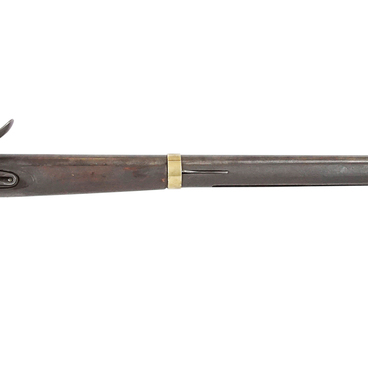After the victory in the Patriotic War of 1812 and a successful foreign campaign in 1813-1814, the Military Department of the Russian Empire began to develop a plan to unify the firearms of the army. The troops were equipped with flintlock guns that often misfired — either, the spark would not go off, or the powder was blown away by wind or wetted with rain.
Following European gunsmiths, Russian designers had to introduce a percussion cap. It consisted of mercury fulminate pressed into a copper or brass cap. The cap was placed over the hollow metal nipple, screwed into the breech. The nipple was used to ignite the main powder charge. This mechanism ruled out any misfire.
The experiments with this system, invented by French and English gunsmiths, were started in 1839 under the supervision of the Committee on the improvement of rifles and guns. According to archive documents, in 1840, five of the best Izhevsk gunsmiths (M. Z. Ivanov, D. A. Krysov, A. L. Obukhov, E. Y. Sapozhnikov and N. S. Chigvintsev) were sent to the Sestroretsk Armory for one and a half year to study the percussion cap lock system. Subsequently, all five of them were presented with award coats with gold lace. Emperor Alexander I instituted this insignia for the Izhevsk gunsmiths in 1819 and it existed until 1915.
On November 23, 1844, Nicholas I gave the following order,
Following European gunsmiths, Russian designers had to introduce a percussion cap. It consisted of mercury fulminate pressed into a copper or brass cap. The cap was placed over the hollow metal nipple, screwed into the breech. The nipple was used to ignite the main powder charge. This mechanism ruled out any misfire.
The experiments with this system, invented by French and English gunsmiths, were started in 1839 under the supervision of the Committee on the improvement of rifles and guns. According to archive documents, in 1840, five of the best Izhevsk gunsmiths (M. Z. Ivanov, D. A. Krysov, A. L. Obukhov, E. Y. Sapozhnikov and N. S. Chigvintsev) were sent to the Sestroretsk Armory for one and a half year to study the percussion cap lock system. Subsequently, all five of them were presented with award coats with gold lace. Emperor Alexander I instituted this insignia for the Izhevsk gunsmiths in 1819 and it existed until 1915.
On November 23, 1844, Nicholas I gave the following order,



